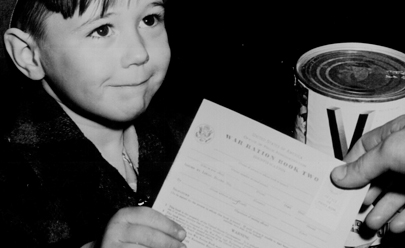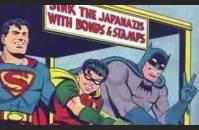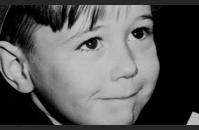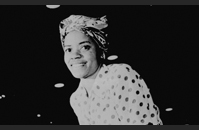THE U.S. HOME FRONT AT A GLANCE:

Image Gallery
The Home Front during WWII
"We are now at war. We are now in it—all the way. Every single man, woman, and child is a partner in the most tremendous undertaking of our American history." So stated President Roosevelt on December 9, 1941, during his weekly radio address to the nation. With the bombing of Pearl Harbor, America had formally entered the war as a partner of the Allies in the fight for democracy—and life on the Home Front would never be the same.
Total war meant that all levels of the economy and all segments of society dedicated themselves to victory. FDR urged Americans to join the war effort by "out-producing and overwhelming the enemy." While scarcity, rationing, and shortages became regular topics of conversation, so too did talk of duty, patriotism, unity, and victory. The United States, which had the world’s 18th largest military in 1939, mobilized itself for total war production almost overnight once the nation entered the war. The immediate conversion of peacetime industries into war production facilities involved companies of all sizes and types. Toy companies began to manufacture compasses. Typewriter companies made rifles and piano factories produced airplane motors. The Ford Motor Company ceased producing cars and began turning out tanks and bombers. And behind each soldier stood hundreds of civilian workers making everything an army needs to fight around the globe. The Depression was over. Full employment was a reality and confidence in victory was strong.
From 1940 until the Japanese surrender, the United States produced more than 300,000 aircraft, 86,000 tanks and 12.5 million rifles. Its shipyards were just as productive, building 107 aircraft carriers, 352 destroyers and 35 million tons of merchant shipping. The US also supplied a majority of war materials for its Allied partners. By 1945, the U.S. had produced more than twice the war supplies of Germany, Italy and Japan combined.
While returning to work and earning more money, Americans on the Home Front also had to learn to ration their food, recycle their scrap, plant backyard "Victory Gardens," and cut back on travel. The government regulated the economy to control inflation, maintaining price and wage controls and instituting tight rationing programs throughout the war. Every family received ration books with stamps and coupons for food items such as meat, sugar, and butter, and other goods, like tires and gasoline. The government further encouraged civilians to collect fabric, scrap metal, and old tires for recycling. Rationing even changed fashion styles. Women’s slacks and skirts became slimmer and shorter to save fabric and men’s suits became cuff-less and vest-less. Millions of families observed Meatless Mondays, millions more helped fund the war by buying War Bonds.
The war permeated every aspect of life on the Home Front. Comic books, popular music, movies, and Broadway shows all had patriotic themes. Propaganda supporting the war effort was everywhere. Slogans like "Kick ‘Em in the Axis" and "Can All You Can" became popular and made people feel that they could play a vital role in producing victory. And the battle on the Home Front changed America in vital ways as the workforce expanded to include women and minorities, people relocated to fill war industries, and the United States fulfilled its role as "Arsenal of Democracy." These changes were not always easy, but Americans made them with the same determination and optimism that they exhibited on the battlefields around the world.
"The principal battleground of the war is not the South Pacific. It is not the Middle East. It is not England, or Norway, or the Russian Steppes. It is American opinion."
--Archibald MacLeish, Director of the Office of Facts and Figures, forerunner of the Office of War Administration
Download a printable version of this At A Glance
TAKE ACTION:


EDUCATION PROJECTS:
Student Travel – WWII Educational Tours
High school and college students, learn the leadership principles that helped win WWII on a trip to France or during a weeklong residential program in New Orleans. College credit is available, and space is limited.
See You Next Year! HS Yearbooks from WWII
Collected from across the United States, the words and pictures of these yearbooks present a new opportunity to experience the many challenges, setbacks and triumphs of the war through the eyes of America’s youth.
The Victory Gardens of WWII
Visit the Classroom Victory Garden Project website to learn about food production during WWII, find lesson plans and activities for elementary students, get tips for starting your own garden and try out simple Victory Garden recipes!
The Science and Technology of WWII
Visit our new interactive website to learn about wartime technical and scientific advances that forever changed our world. Incorporates STEM principles to use in the classroom.
Kids Corner: Fun and Games!
Make your own propaganda posters, test your memory, solve puzzles and more! Learn about World War II and have fun at the same time.






